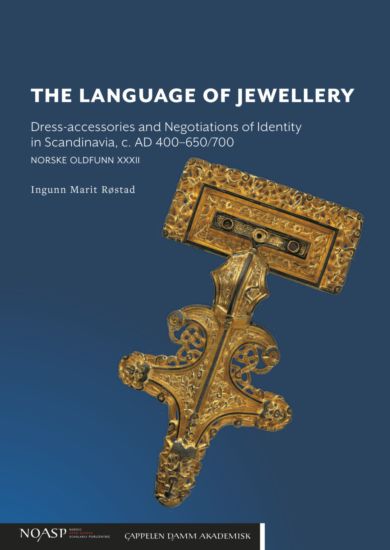The language of jewellery
dress-accessories and negotiations of identity in Scandinavia
Norske oldfunn
- Format: Innbundet
- Antall sider: 391
- Språk: Engelsk
- Forlag/Utgiver: Cappelen Damm AS
- Nivå: Voksen
- Serienavn: Norske oldfunn
- Serienummer: XXXII
- EAN: 9788202716202
- Kom i salg: 8. sep. 2021
- Utgivelsesår: 2021
- Bidragsyter: Røstad, Ingunn Marit (for) ; (utg)
- Utgave nr.: 1
- Emnekategori: edelstener og smykker: kunstverk og design, Edle metaller
449,-
In the 5th-7th centuries AD, members of the female population in Scandinavia frequently wore a costume adorned with conspicuous items of jewellery. Many of the items, such as brooches and clasps, were dress-accessories used to fasten these garments. Some of them, moreover, were popular over an extended area of Europe, and have been found in Scandinavia, Anglo-Saxon England and on the Continent alike. This book provides an analysis of more than 1,800 such items of jewellery from Scandinavia. It explores the contextual and geographical distribution through time of four major types of dress-accessory: cruciform brooches, relief brooches, wrist-clasps and conical brooches.
Detailed analysis reveals distribution patterns and variations that provide new insights into the multifaceted reality of the Scandinavian pre-Viking period. The author argues that in a time characterized by social stress and upheaval, women played an important role in the negotiation of identities through the use of costume adorned with dress-accessories. These negotiations were part of a continuous, complex and ever-changing discourse of identity, in which different dimensions of multiple identities were generated, articulated and transformed. In some instances, a common identity is manifest even at a date which precedes by several centuries the unification of much the same areas into single medieval kingdoms, while social and political conditions could equally trigger either the material expression or the disappearance of shared identities at local, regional, and even pan-European levels.
This book also offers a more nuanced view of ethnic groupings during the 5th-7th centuries by examining the inter-connectedness of the flexible and mobile 'warrior nations' of the Migration Period, and the territorially rooted, often historically documented 'peoples', who are reflected in the practices of female dress.
Detailed analysis reveals distribution patterns and variations that provide new insights into the multifaceted reality of the Scandinavian pre-Viking period. The author argues that in a time characterized by social stress and upheaval, women played an important role in the negotiation of identities through the use of costume adorned with dress-accessories. These negotiations were part of a continuous, complex and ever-changing discourse of identity, in which different dimensions of multiple identities were generated, articulated and transformed. In some instances, a common identity is manifest even at a date which precedes by several centuries the unification of much the same areas into single medieval kingdoms, while social and political conditions could equally trigger either the material expression or the disappearance of shared identities at local, regional, and even pan-European levels.
This book also offers a more nuanced view of ethnic groupings during the 5th-7th centuries by examining the inter-connectedness of the flexible and mobile 'warrior nations' of the Migration Period, and the territorially rooted, often historically documented 'peoples', who are reflected in the practices of female dress.


